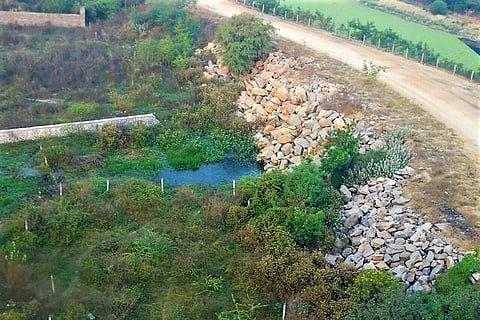

Debris was found dumped at the banks of Hyderabad’s historic Neknampur Lake on Tuesday, days after gates installed at the water body's entrance were pulled down.
The gates were sanctioned by the Irrigation Department and constructed by activist Madhulika Choudhary and her NGO Dhruvansh, have been working on the revival of the lake since 2016.
Last week, the activist had alleged that the gates had been brought down by locals who had the support of the Neknampur Sarpanch.
Stating that public property had been destroyed, Madhulika had stated that the demolition was a big offence and demanded strict action against those who planned to bring down the gate.
With the recent debris dumping, the activist said that the local population of pythons and monitor lizards would also come under threat, as they could be crushed by heavy vehicles.
"January to March is the breeding season for pythons. They usually come out of water at night and cross roads. The opening of gates might result in many more pythons being crushed. Why give permission to construct a gate if we can’t close it," Madhulika was quoted as saying.
A similar incident had taken place in July last year, as a vehicle full of mud and stones dumped debris at the lake, after it was allegedly brought from Neknampur village.
The Ibrahim lake was once used as a source of drinking water in the area, but is now a stagnating cesspool, due to dumping.
Just earlier this month, the lake was in the news for its ‘floating islands’ that were introduced into the water body, in an attempt to clean it.
A ‘floating island’ unit, is essentially a plant which is introduced on the floating surface of the water. The plant’s job is to absorb the high content of phosphorous and nitrogen found in the sewage water entering the lake, so that the lake remains considerably cleaner and can support aquatic life.
At present, the lake holds around 3,500 such saplings.